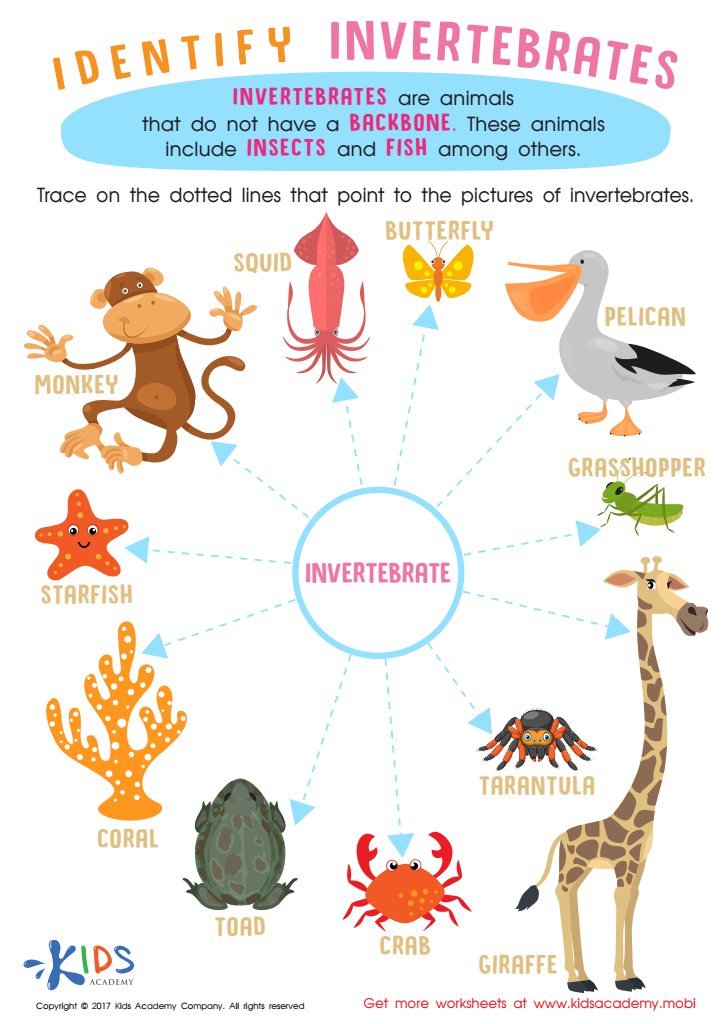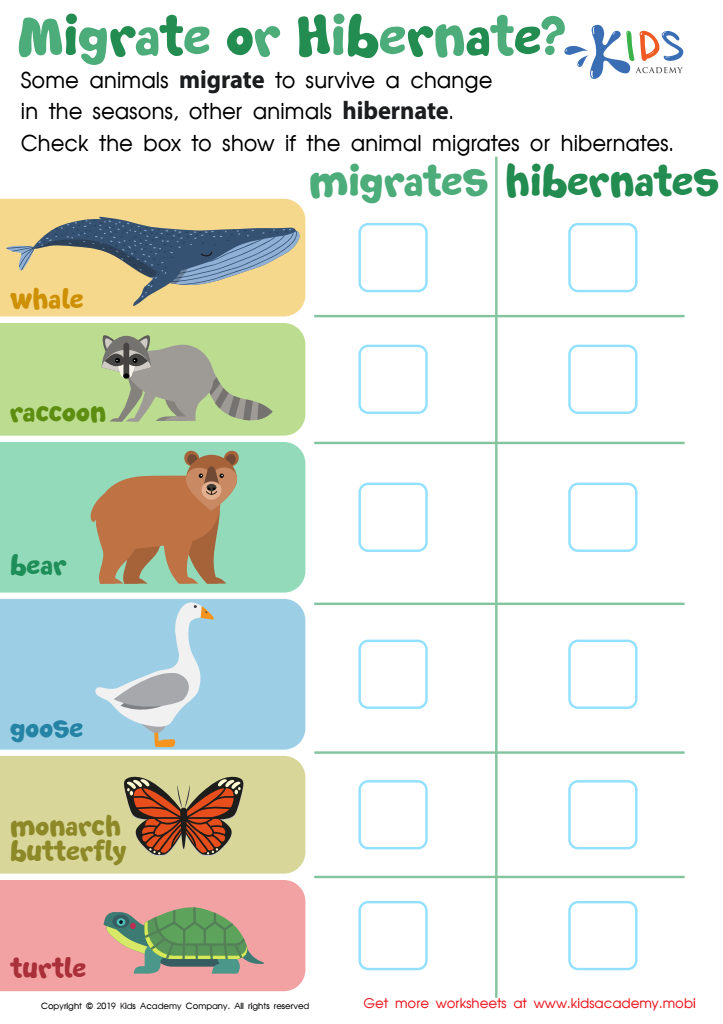Categorizing animals Normal Worksheets for Ages 5-9
3 filtered results
-
From - To
Explore our "Categorizing Animals Normal Worksheets" designed for children ages 5-9! These engaging worksheets help young learners develop essential classification skills while having fun. They will gain a deeper understanding of different animal groups, their habitats, and characteristics. Our colorful, age-appropriate printables make learning enjoyable and interactive, nurturing critical thinking and cognitive skills. Perfect for both classroom and home use, these worksheets are a great addition to any elementary science or nature curriculum. Download today to support your child's educational journey and encourage a lifelong love of nature and animals.


Studying Fossils Worksheet


Invertebrates Worksheet for Grade 3


Migrate or Hibernate? Worksheet
Categorizing animals is an essential educational activity for children aged 5-9, benefiting both cognitive and personal development. For parents and teachers, fostering these skills can lay the groundwork for inquisitive minds and well-rounded individuals. Firstly, categorizing animals helps children grasp basic scientific concepts, breaking down the vast world of biological diversity into understandable segments. This practice enhances their observation skills as they learn to note distinct features like habitats, dietary preferences, and physical characteristics.
Such categorization nurtures critical thinking. When children differentiate between mammals, reptiles, and amphibians, they start to develop classifying, sorting, and reasoning abilities. Furthermore, this practice introduces them to essential conservation principles. Learning about different species and their environments fosters empathy towards animals and highlights the importance of ecological balance.
In addition to intellectual growth, skillful categorization instills a sense of order and organization in young minds, aiding them in numerous areas, from problem-solving to logical analysis. Socially, discussing and sharing their classifications with peers enhances communication skills and teamwork.
Overall, by caring about animal categorization, parents and teachers play a crucial role in promoting a well-rounded, inquisitive, and environmentally-conscious generation, equipping children with tools they will use throughout their educational journey and beyond.
 Assign to My Students
Assign to My Students















